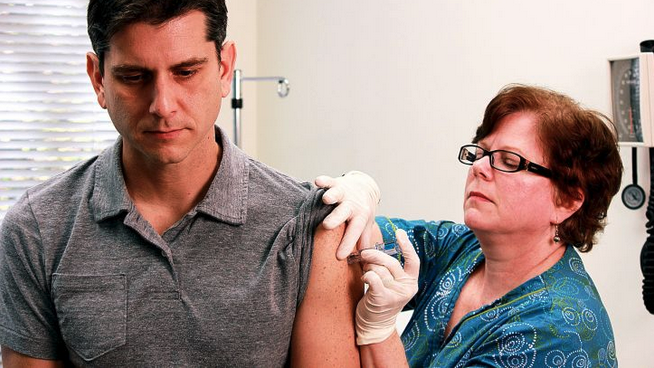Remember how, during the pandemic, some countries would let you visit, but only if you could show proof of having received your COVID vaccination? Yeah, good times. (actually, for us, it kinda was – it’s how we wound up going to Iceland. The country wasn’t even on our radar to visit, but in the summer of 2021, they let Americans in if they had received the full two-dose COVID vaccine series. So we went — and Iceland turned out to be a lovely country!)
It’s a few years later and thankfully, just as epidemiologists predicted, COVID has evolved to no longer be the killer it once was. However, thanks to the unfortunate mix of conspiracy theorists and naive people who’ll seemingly believe anything, increased vaccine hesitancy has allowed some diseases and viruses to affect more people than they have in decades.
Measles is a perfect example.
Measles is an airborne disease that is easily spread through the coughs and sneezes of those infected with it. Symptoms show up roughly 7 to 14 days after contact with the virus. The first symptoms usually are typically high fever, dry cough, runny nose and red, watering eyes. Roughly 2 to 3 days after the first symptoms, you may also see tiny white spots inside the mouth, called Koplik spots. And then, about 3 to 5 days after symptoms first start, or about 14 days after you come into contact with the virus, it’s common to see a rash made up of large, flat spots and small raised bumps. The rash starts on the face or neck and spreads down the body from the chest to the arms and legs.
This child shows a classic day-4 rash with measles (PC: public domain)
A person with measles can spread the virus four days before the rash appears and four days after. It’s one of the most communicable viruses known to man, with one person typically spreading it to upwards of 20 others.
Complications of measles are relatively common and may include higher risk of bacterial infections (due to immune amnesia), viral or bacterial pneumonia, encephalitis (swelling of the brain), corneal ulceration (which can lead to partial blindness), infectious diarrhea and otitis media (swelling inside the ears, which can lead to permanent hearing loss. I had a relative who became deaf because they had measles when they were a little kid).
Despite a vaccine in use since 1963, outbreaks of the infection are increasing in developing countries where the vaccine isn’t as widely available, as well as in areas where people actively refuse the vaccine.
Honduras’ mandate
It’s gotten to the point where the Central American country of Honduras, a popular spot for vacations and cruises, is now mandating that all visitors to the country must show proof of having received a measles vaccination, or provide proof of a recent negative measles test.
Honduran Health Minister Carla Paredes stated that “we are currently on high alert for measles. Belize already has it, and crossing through Puerto Barrios and entering through Cedeño is the easiest thing in the world for a virus this contagious.” Therefore, all persons entering Honduras must present proof of updated vaccination.
From the U.S. Embassy in Honduras:
According to the Secretary of State at the Ministry of Foreign Affairs and International Cooperation, Honduran authorities are requiring documentation to show proof of a measles vaccine for travelers coming from various countries, including the United States, for any travel over land, by sea, or by air for all foreign travels to Honduras. If someone cannot receive the vaccine, they will need to show proof 72 to 80 hours before the flight of a negative measles test.
Actions to Take:
- Have travel documents up to date and easily accessible.
- Carry proper identification at all times.
- Visit the CDC Travelers Health Page.
- Monitor local media for updates.
- Monitor local media and U.S. Embassy Facebook and Twitter pages for updates.
- U.S. citizens who travel abroad should always have a contingency plan for emergency situations. Review the Traveler’s Checklist .
So there you go. If you have any visits to Honduras coming up, you’ll need to show either proof of your measles vaccine (it’s typically part of your MMR) or get tested 72 to 80 hours before your arrival, to prove you don’t have it.
Want to comment on this post? Great! Read this first to help ensure it gets approved.
Want to sponsor a post, write something for Your Mileage May Vary, or put ads on our site? Click here for more info.
Like this post? Please share it! We have plenty more just like it and would love it if you decided to hang around and sign up to get emailed notifications of when we post.
Whether you’ve read our articles before or this is the first time you’re stopping by, we’re really glad you’re here and hope you come back to visit again!
This post first appeared on Your Mileage May Vary
Join our mailing list to receive the latest news and updates from our team.

